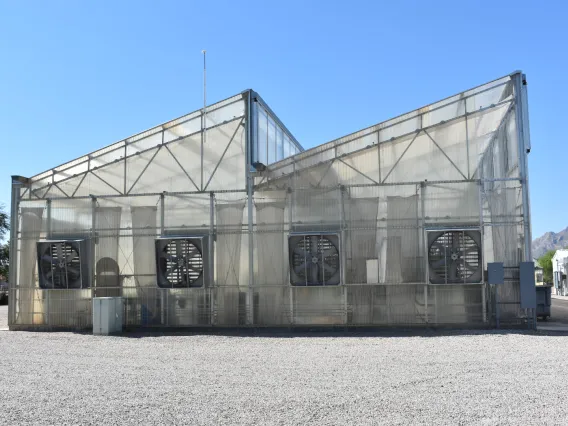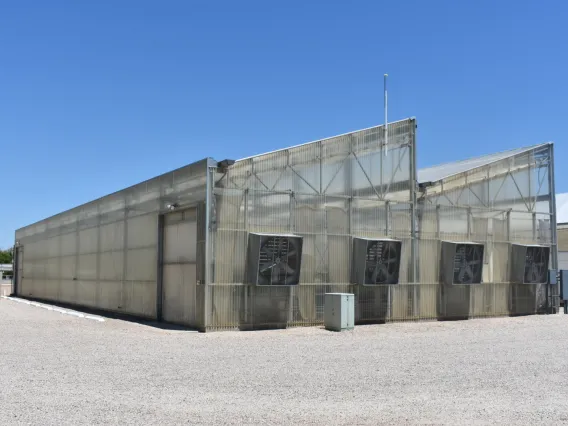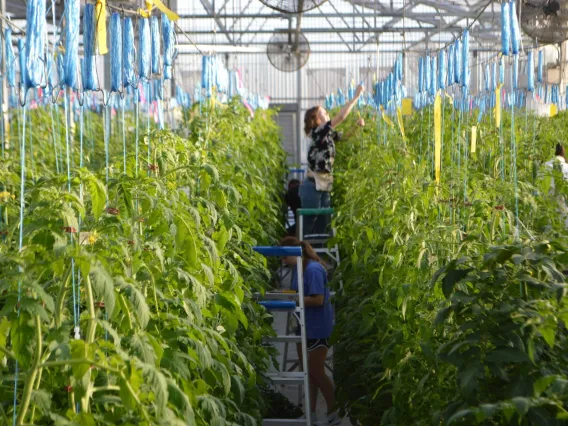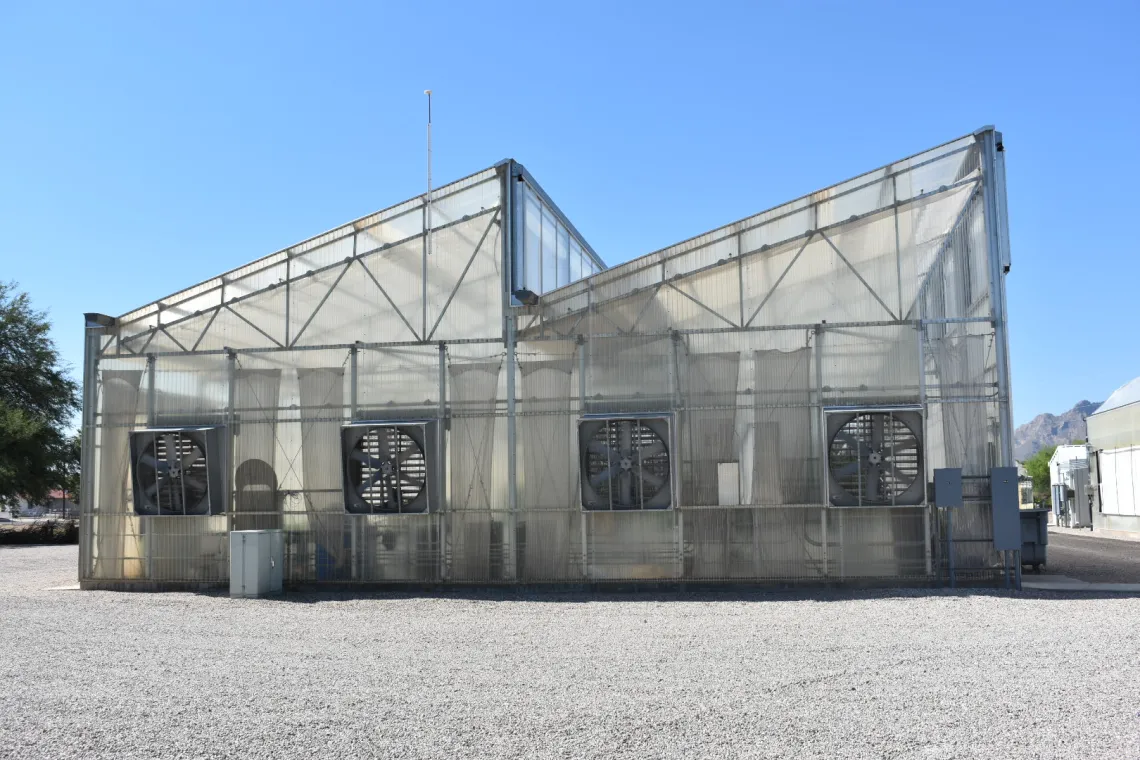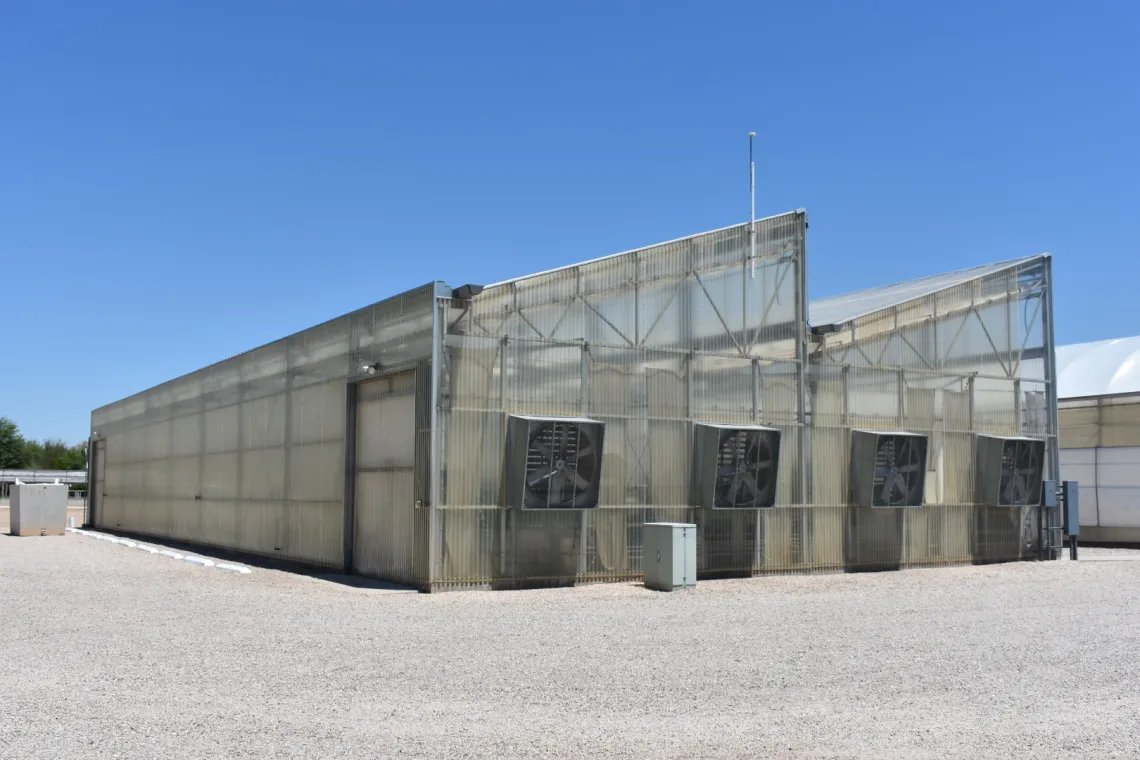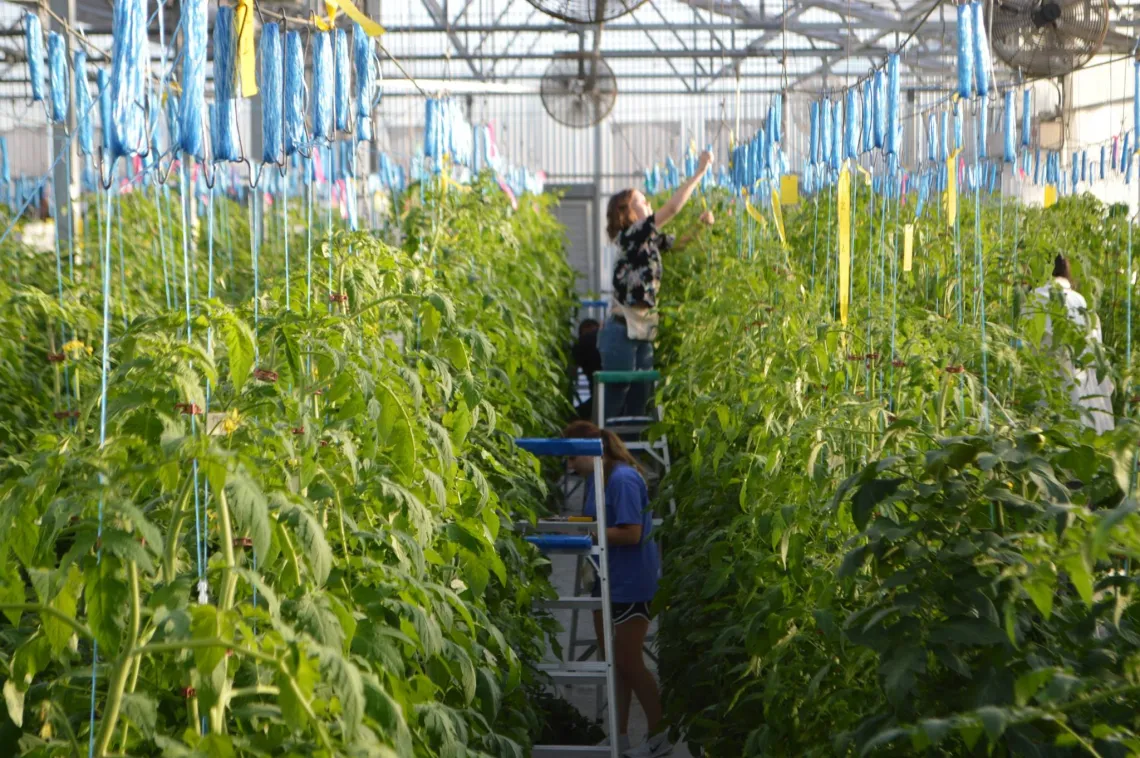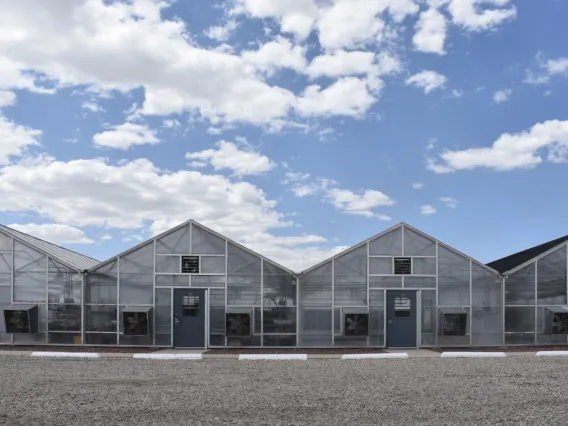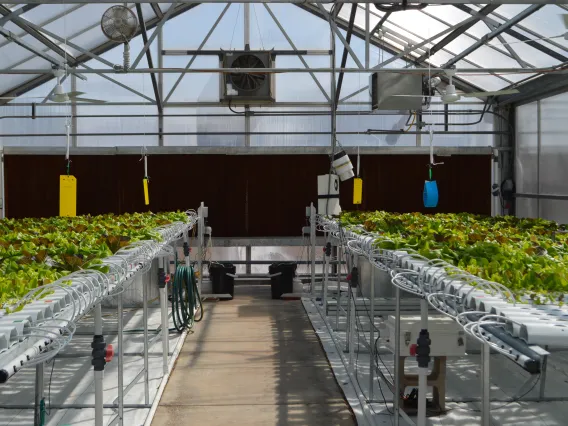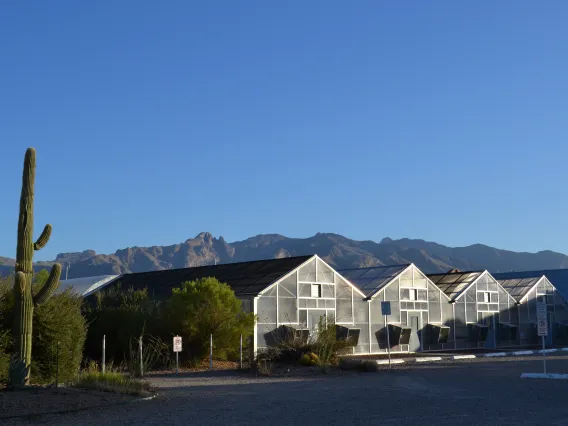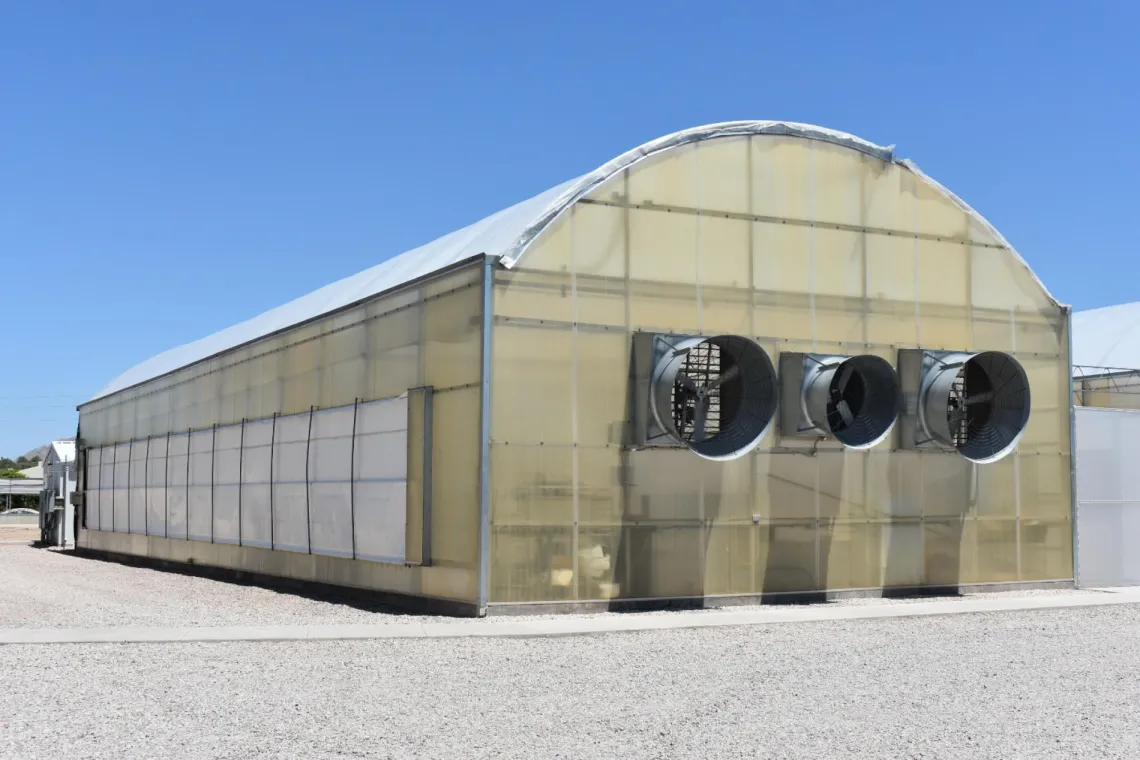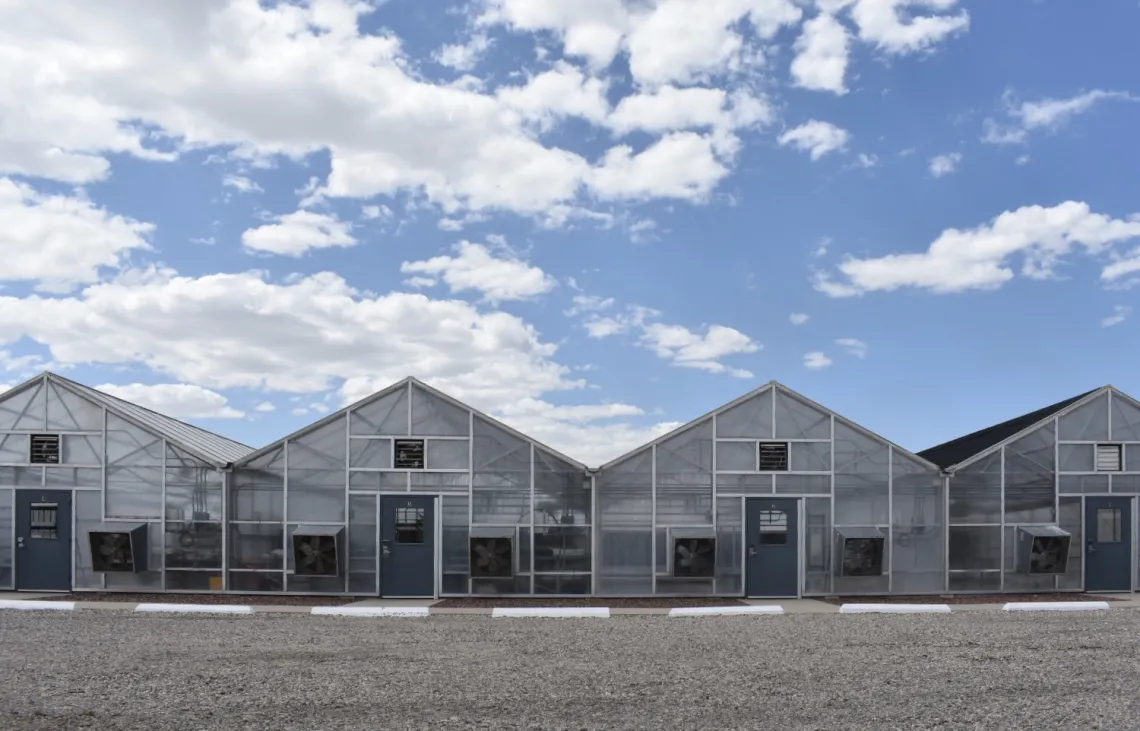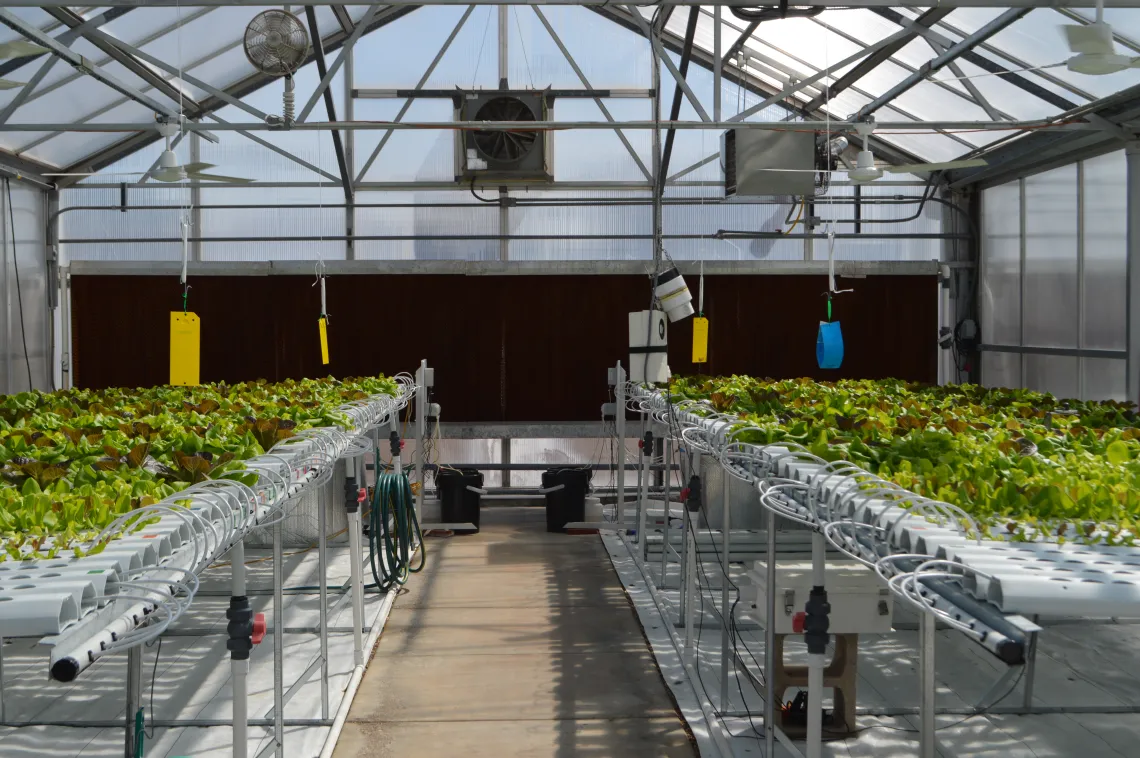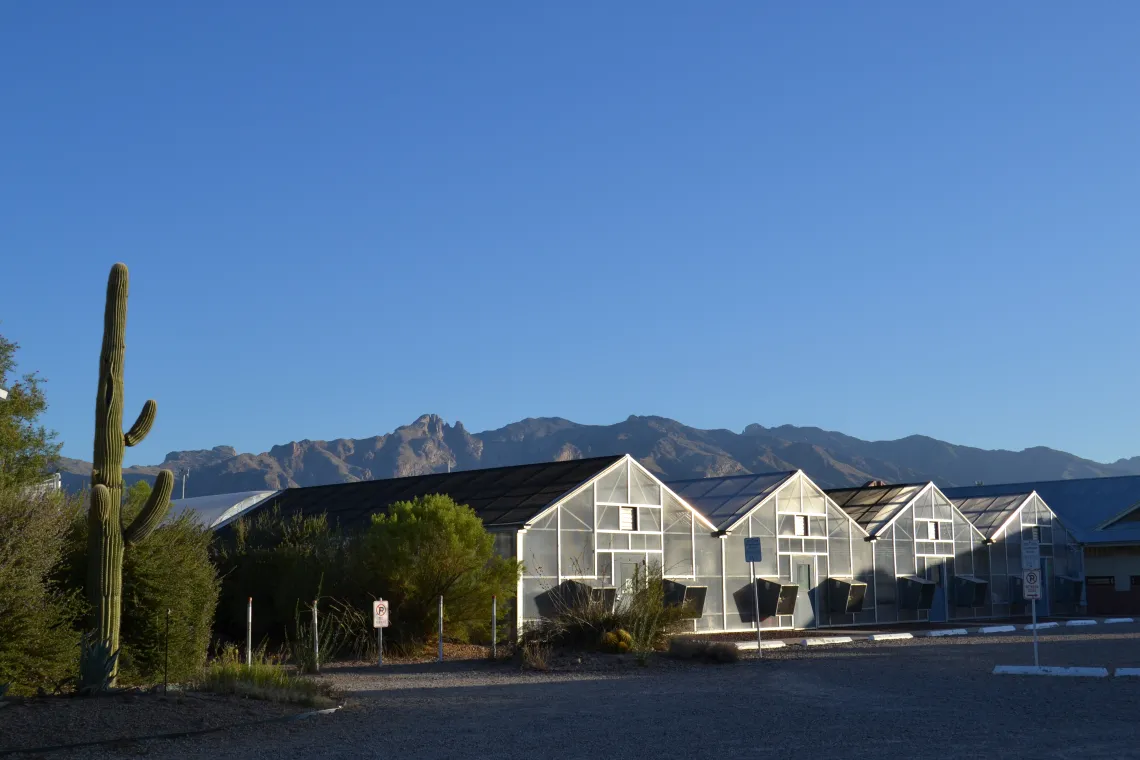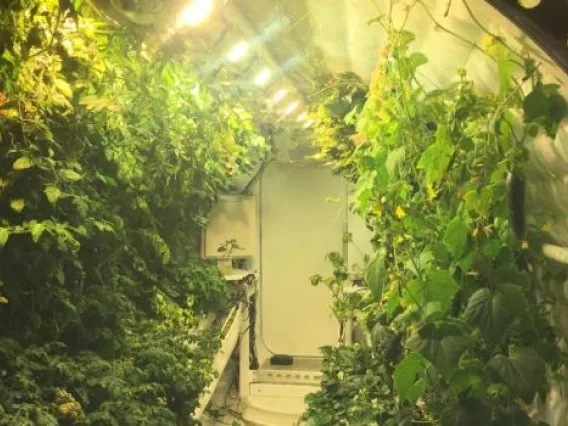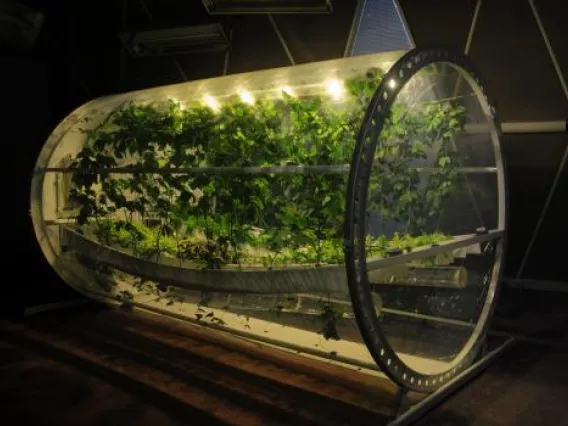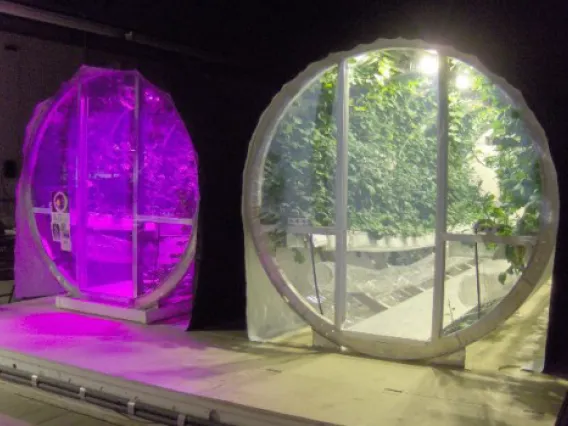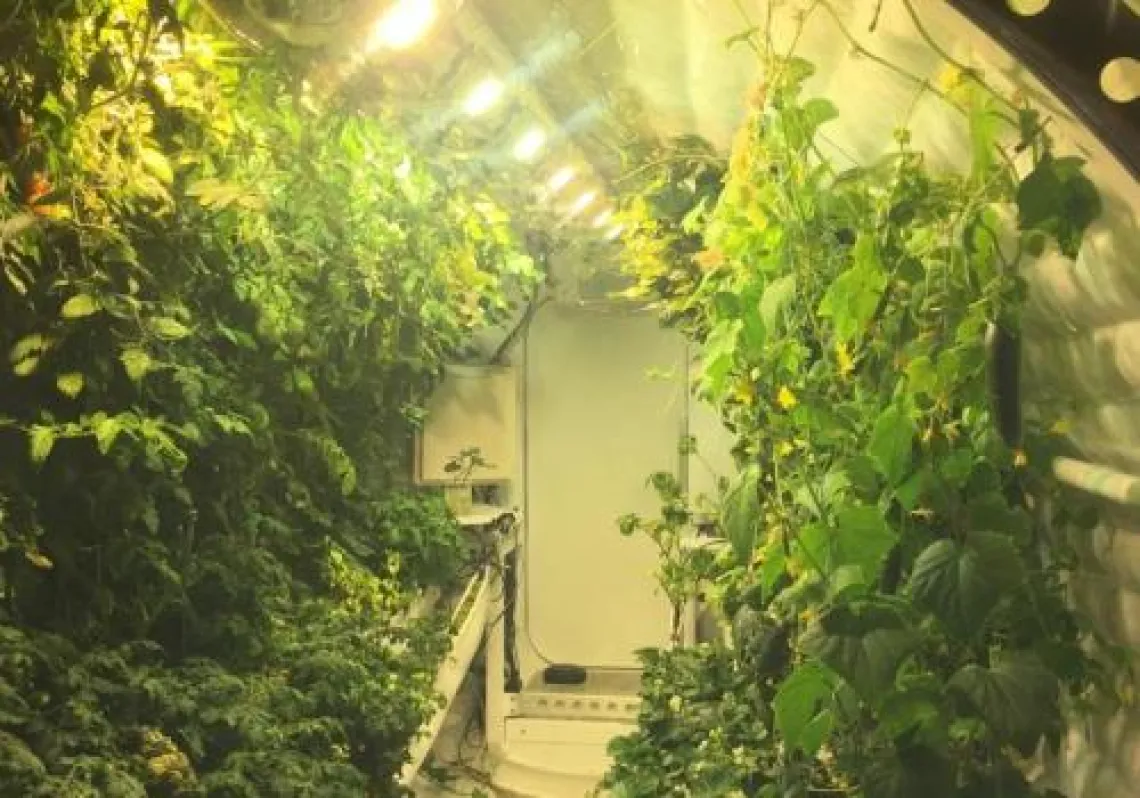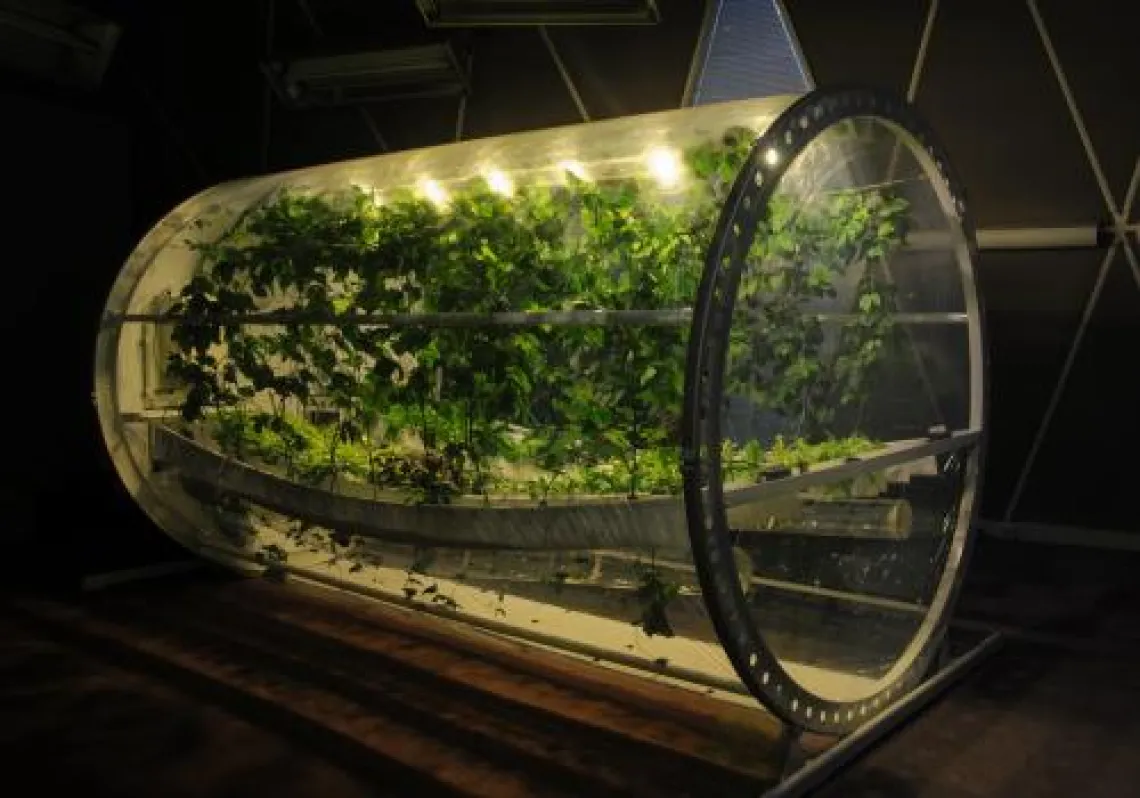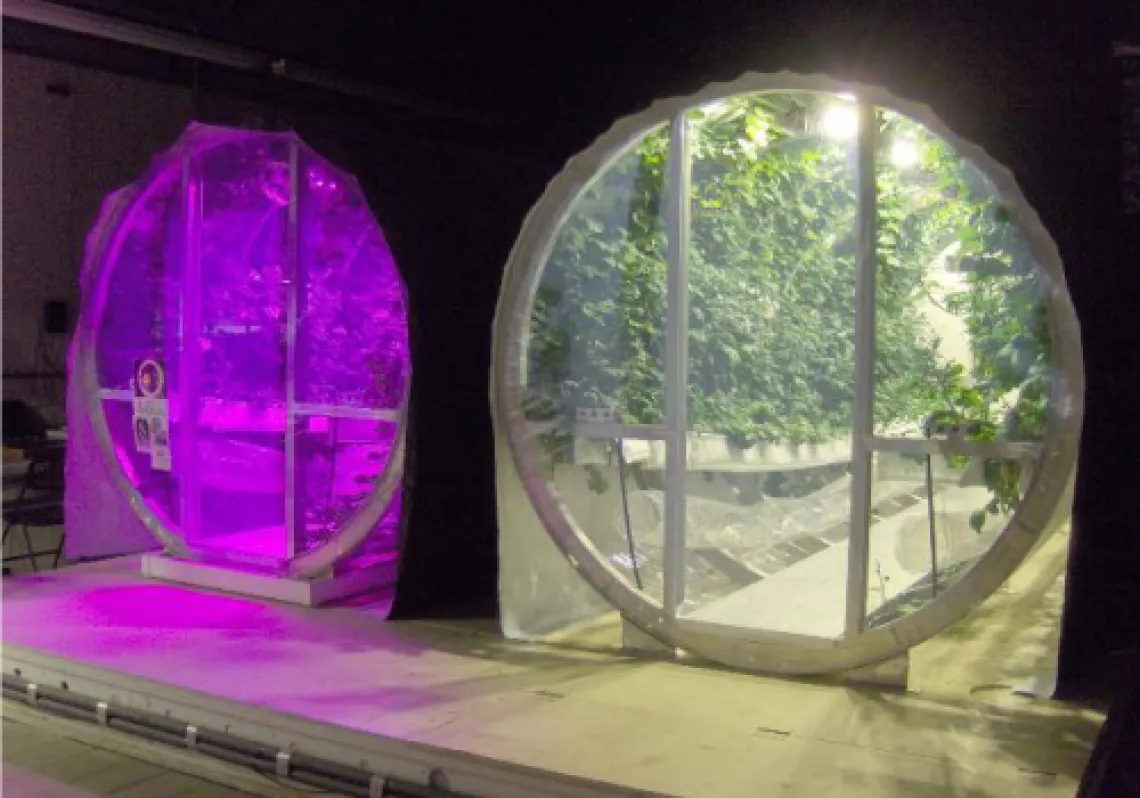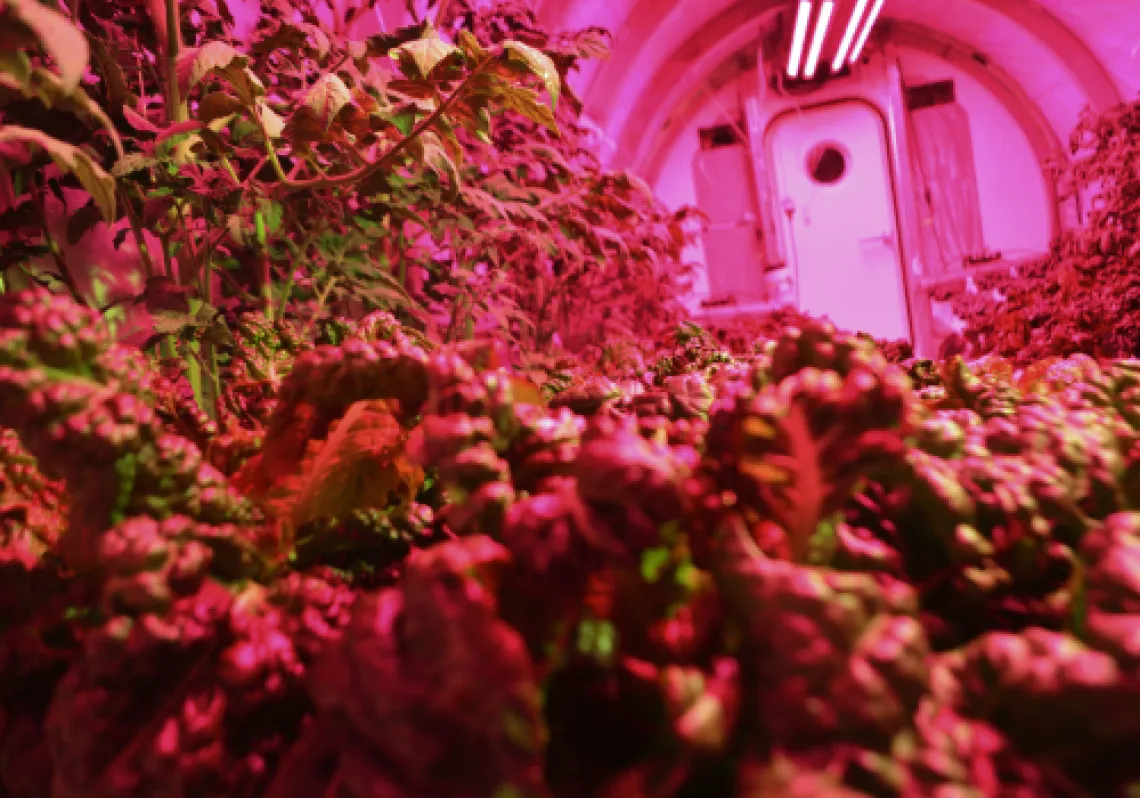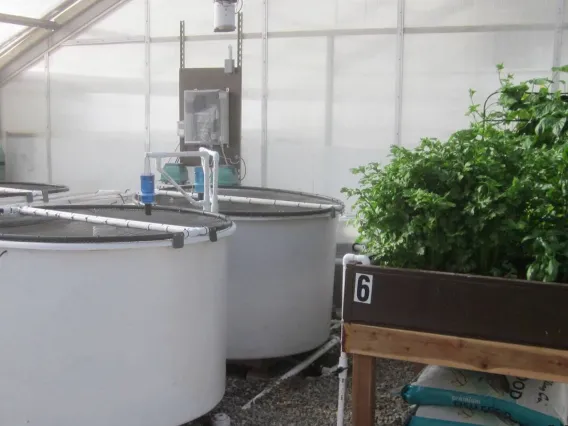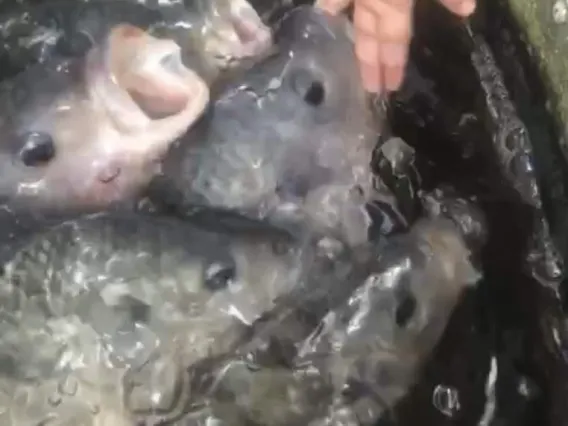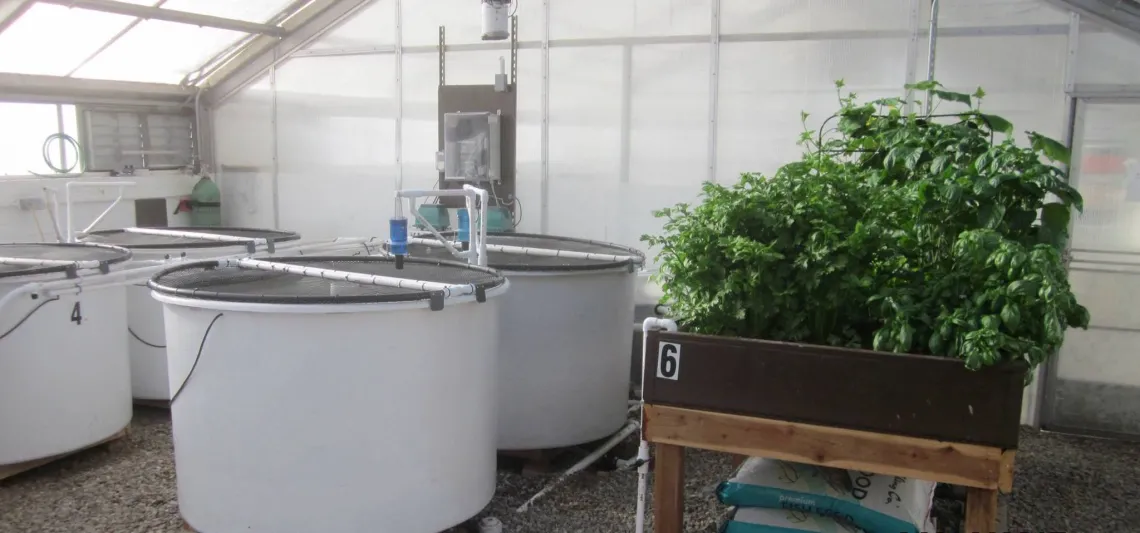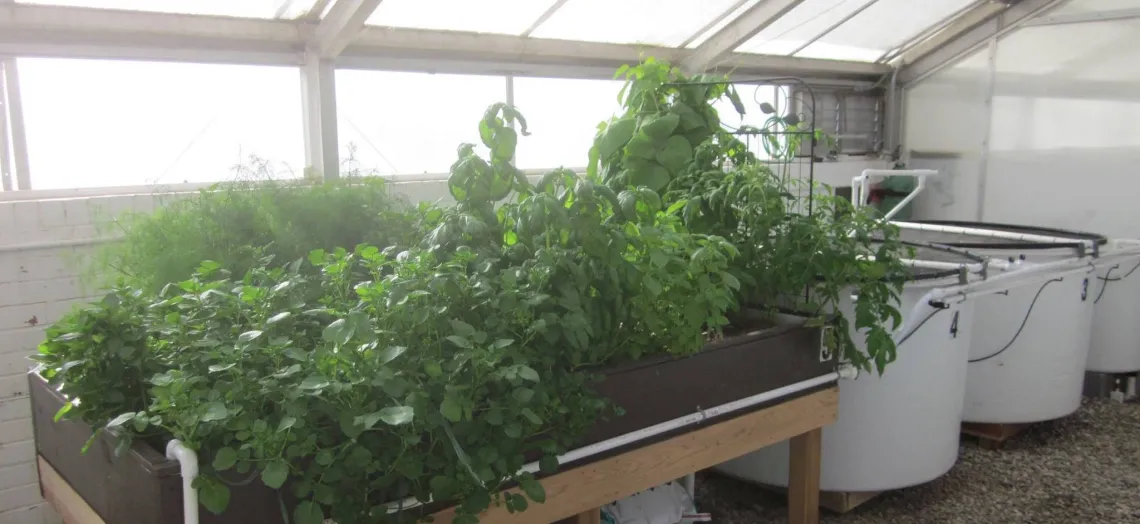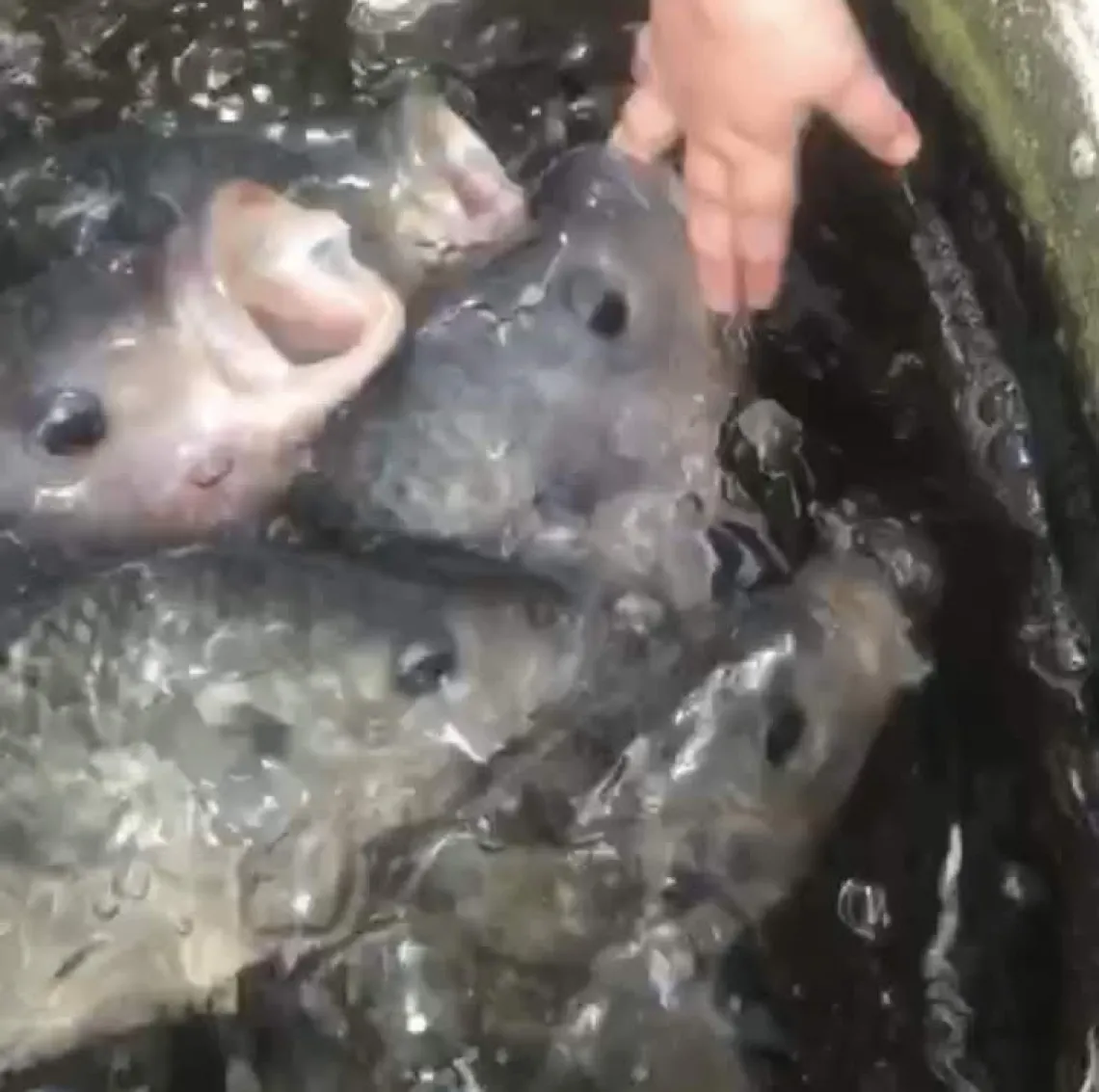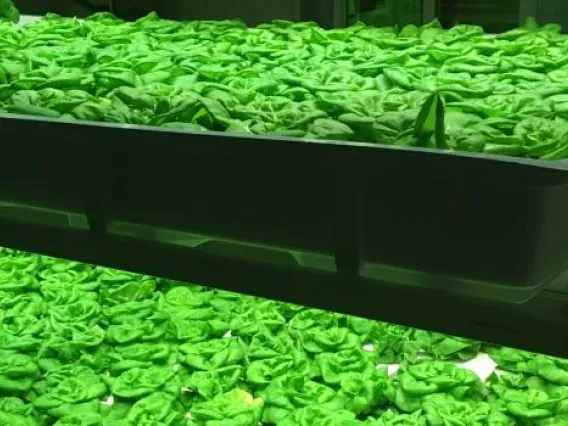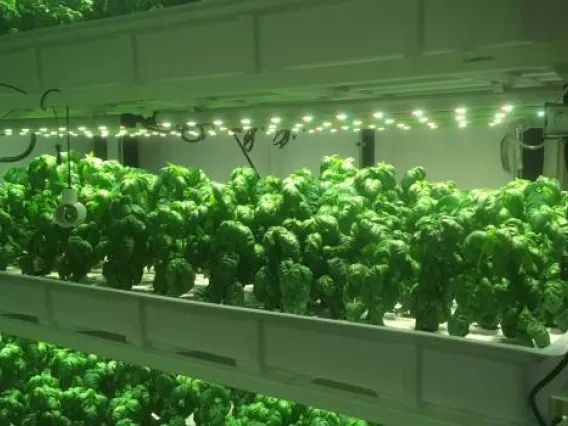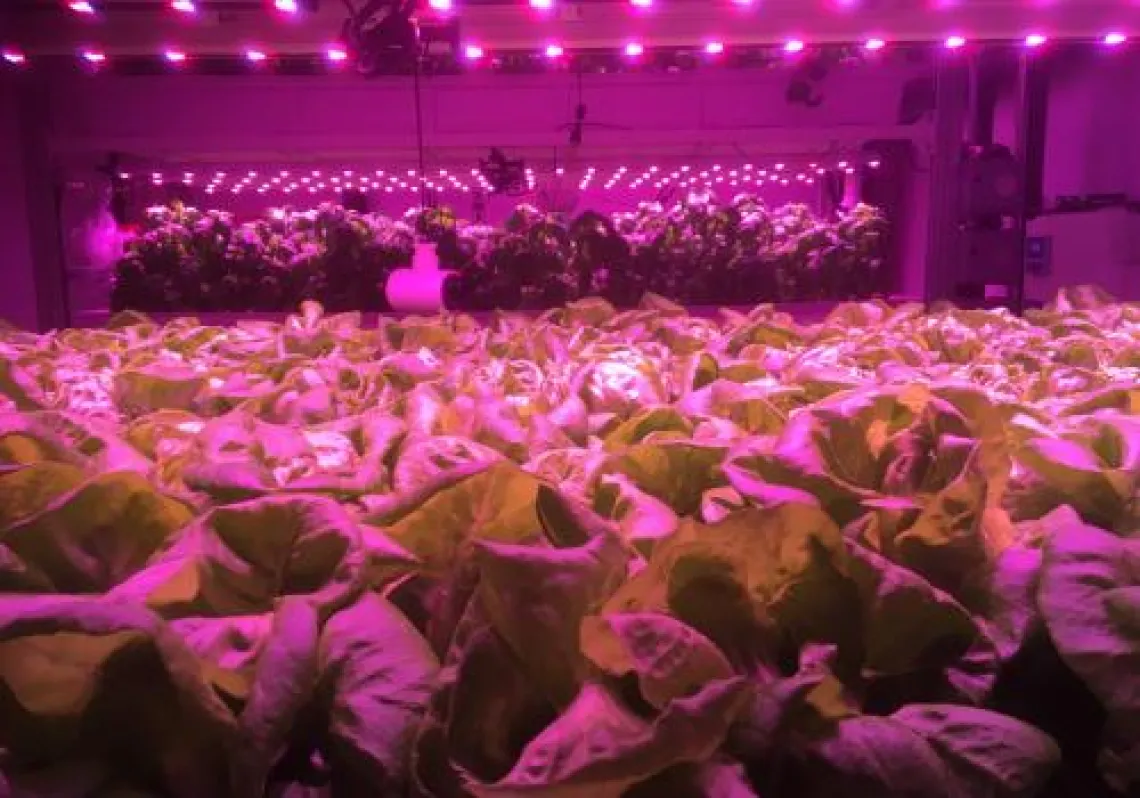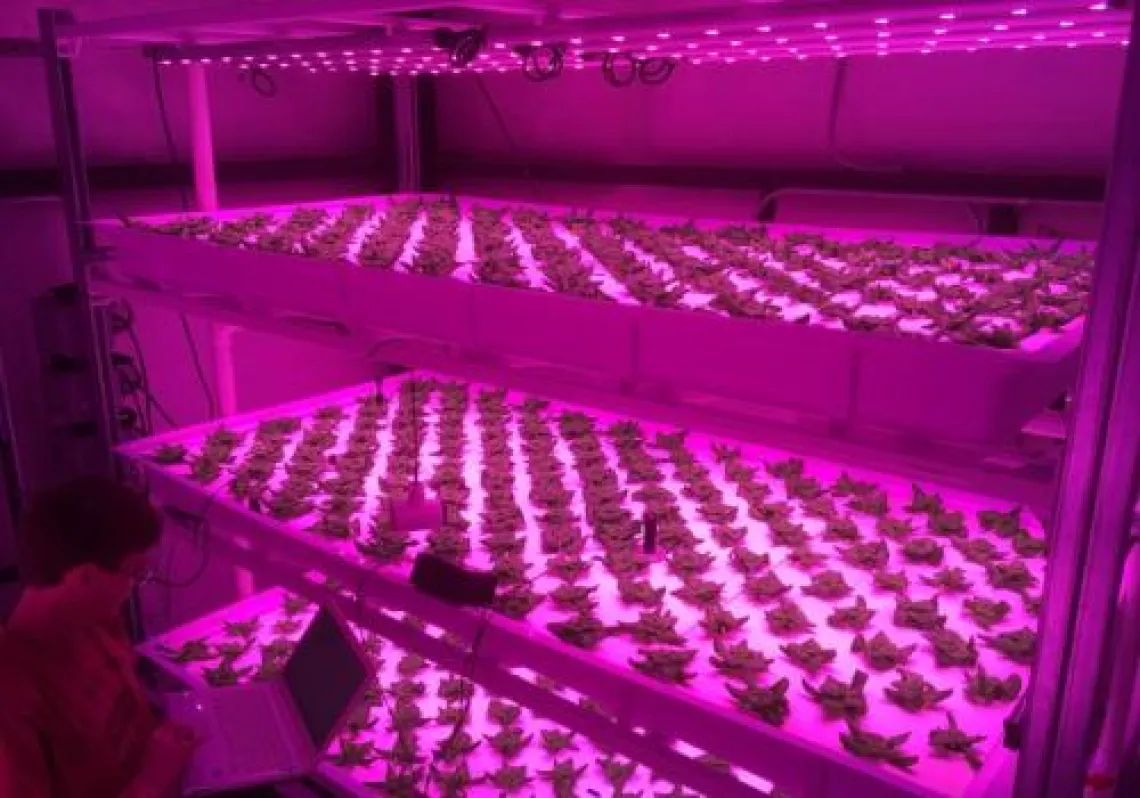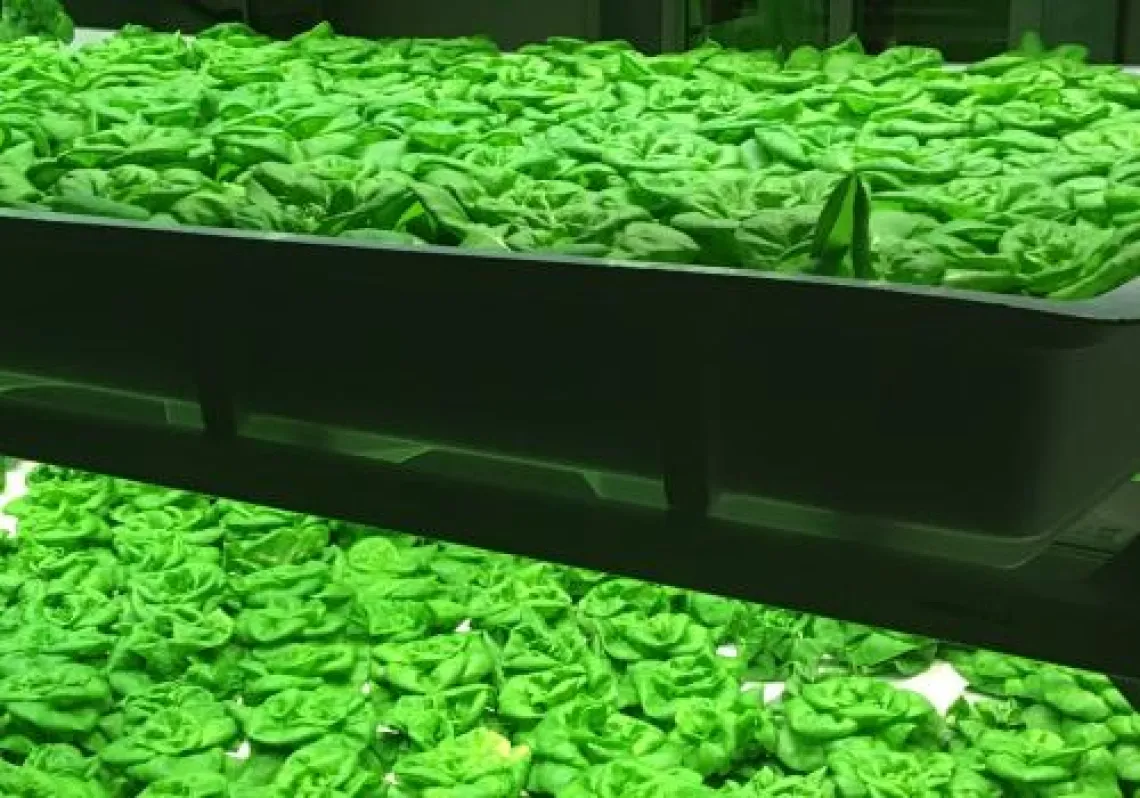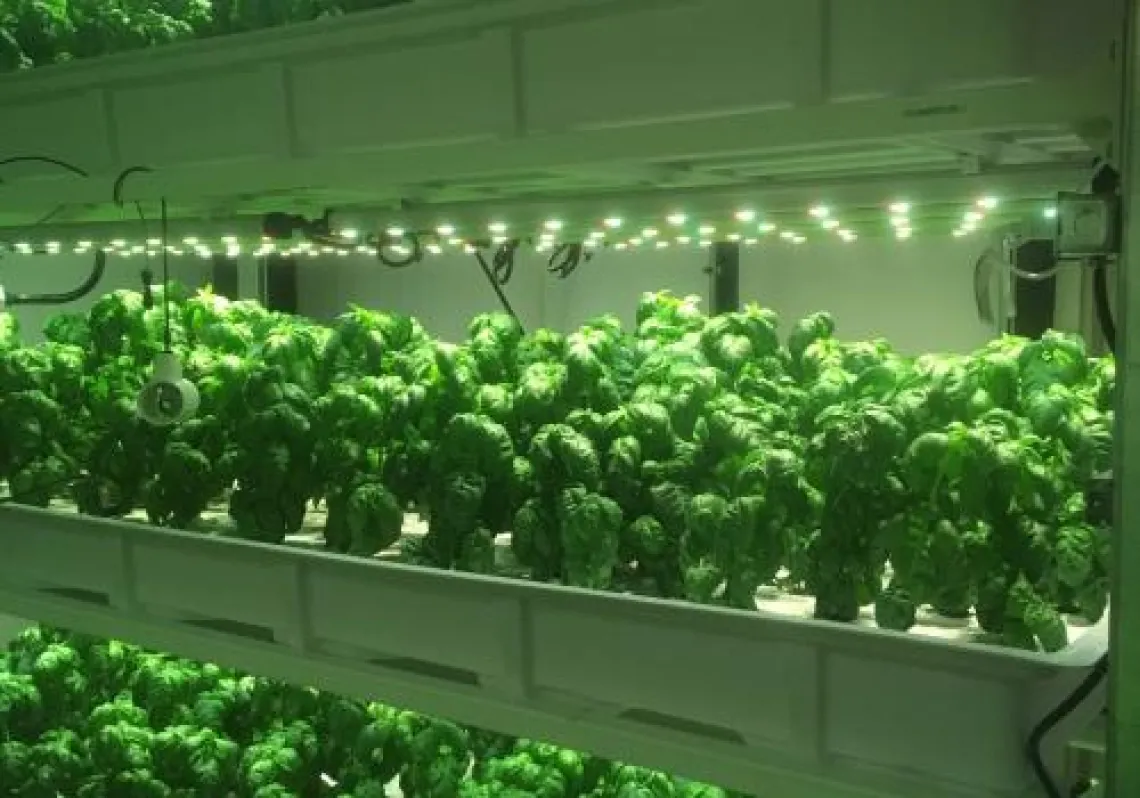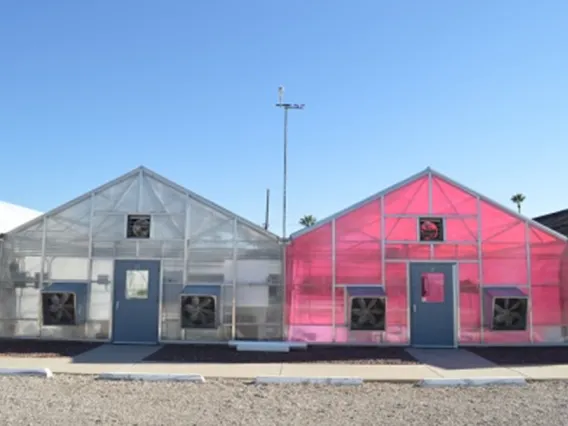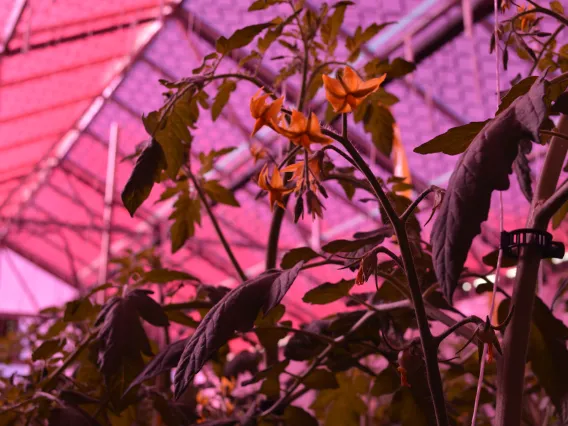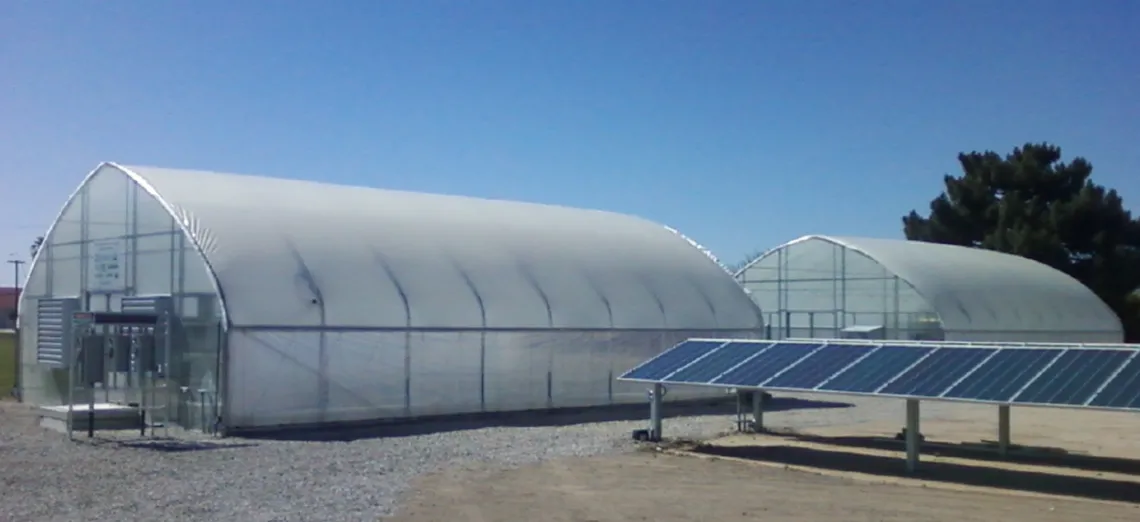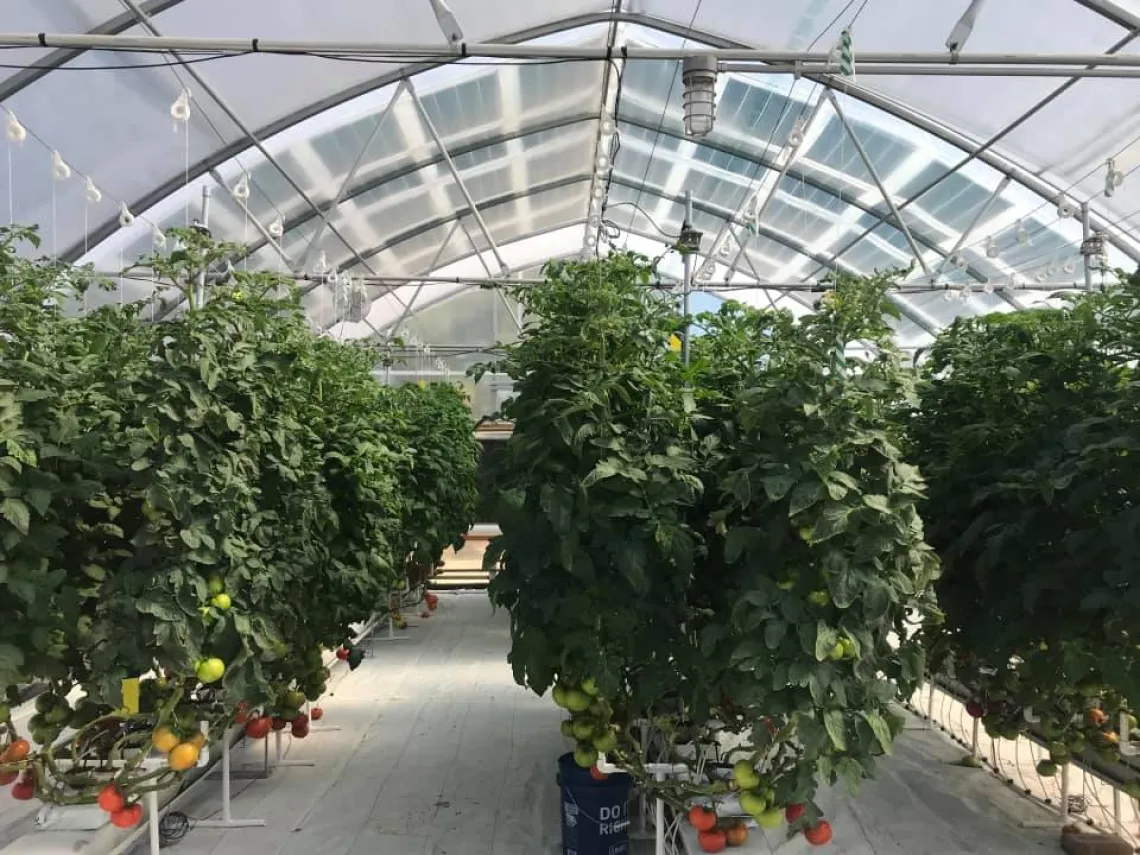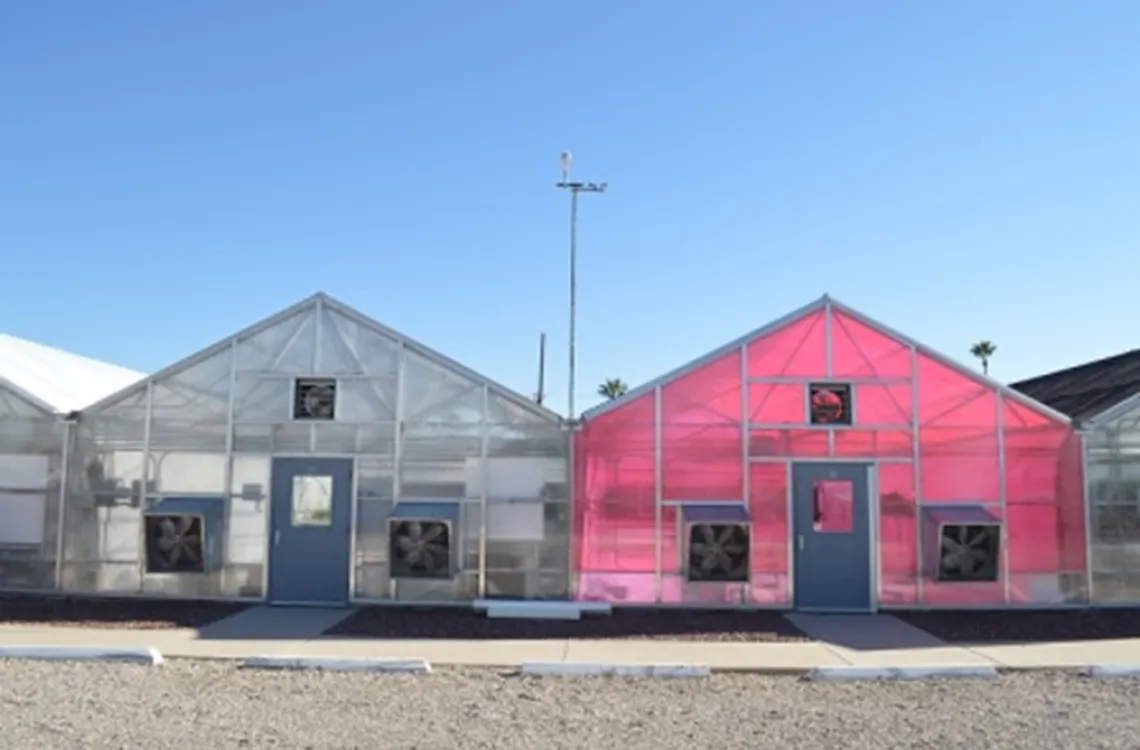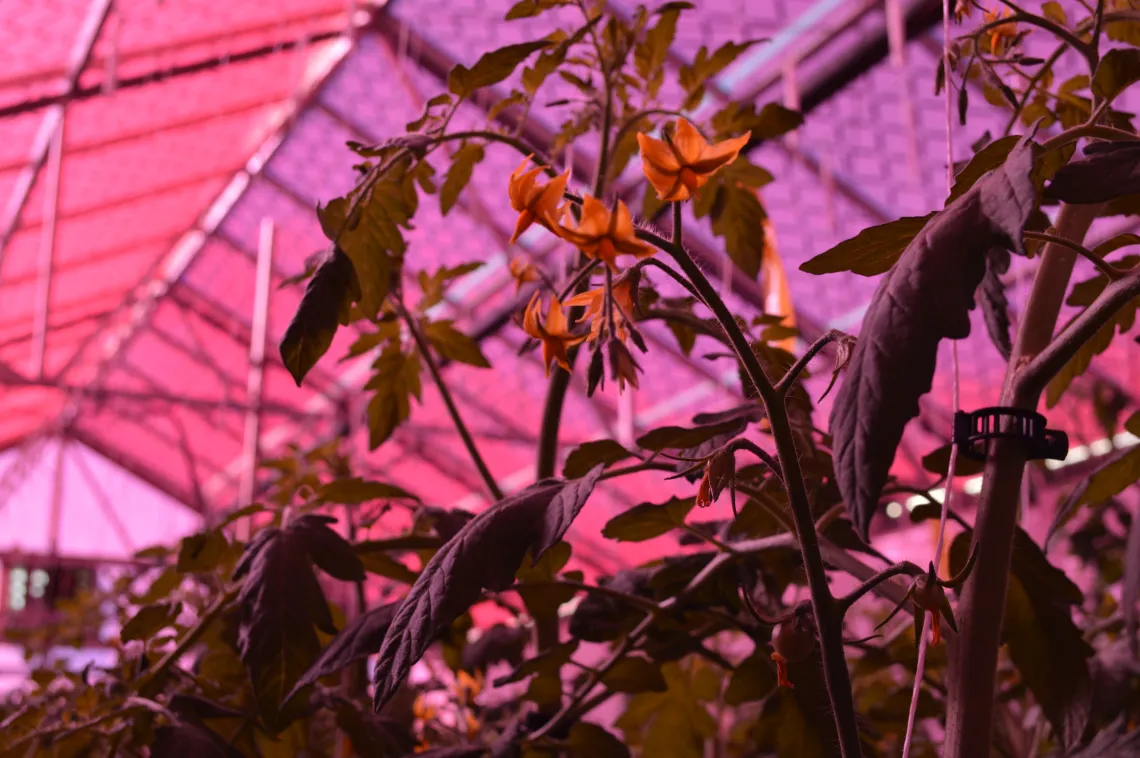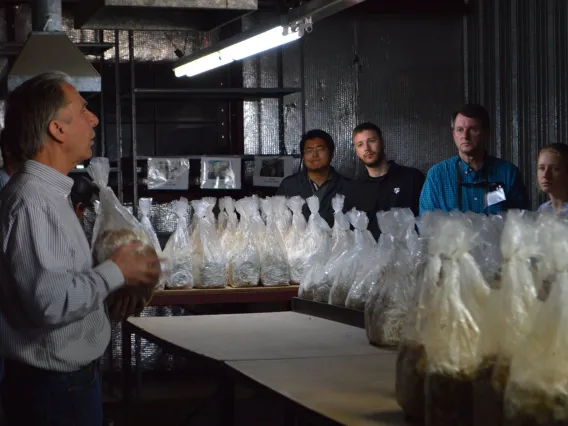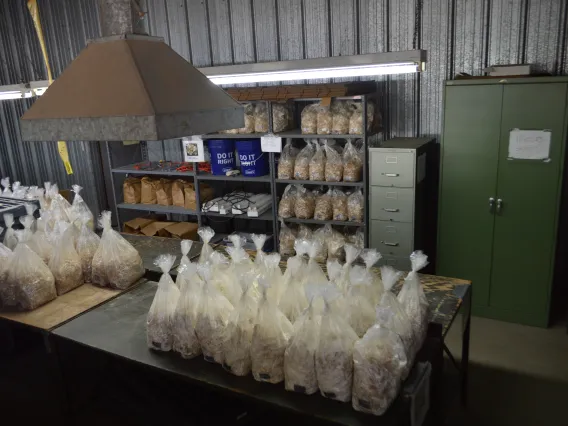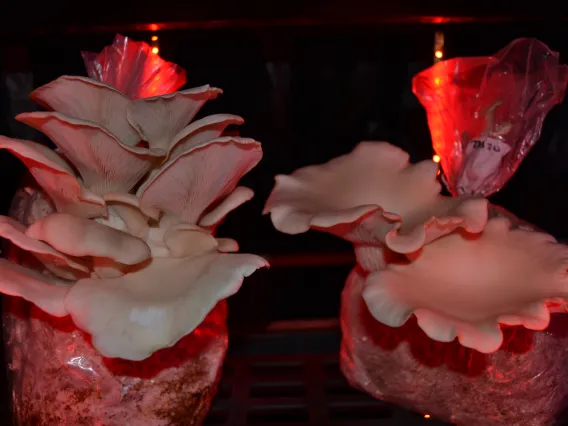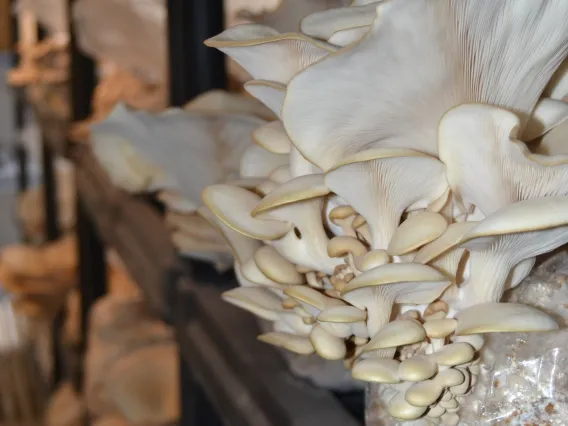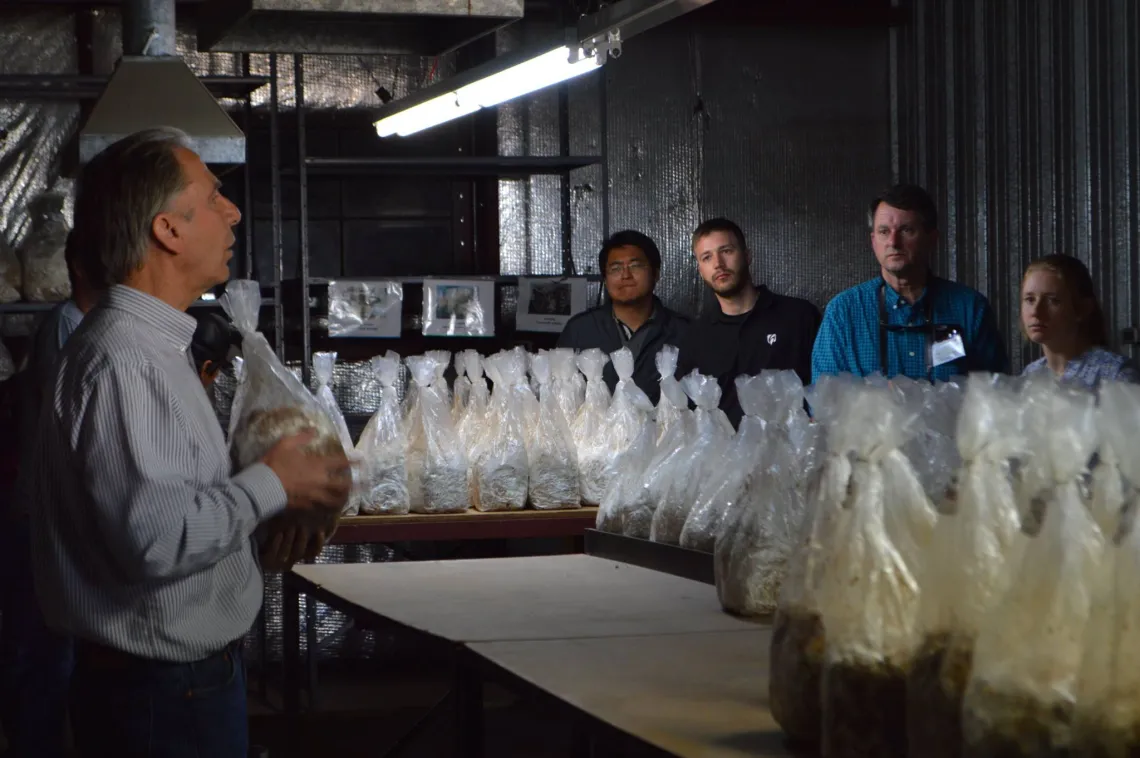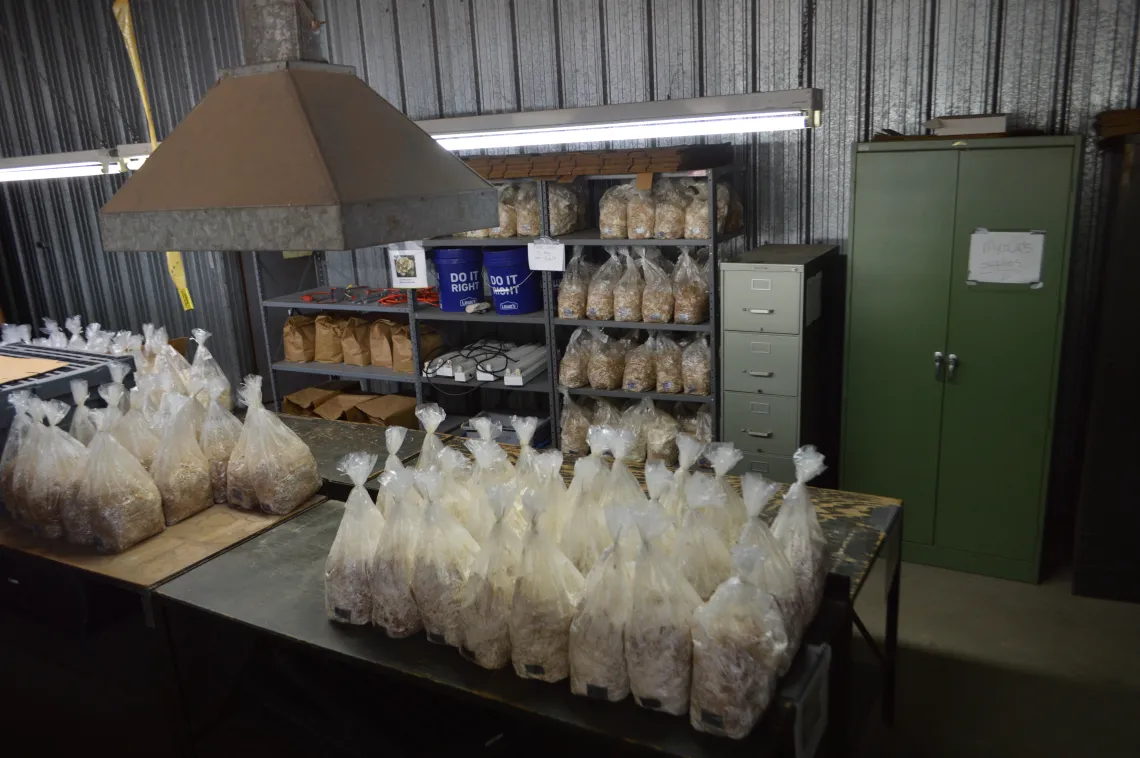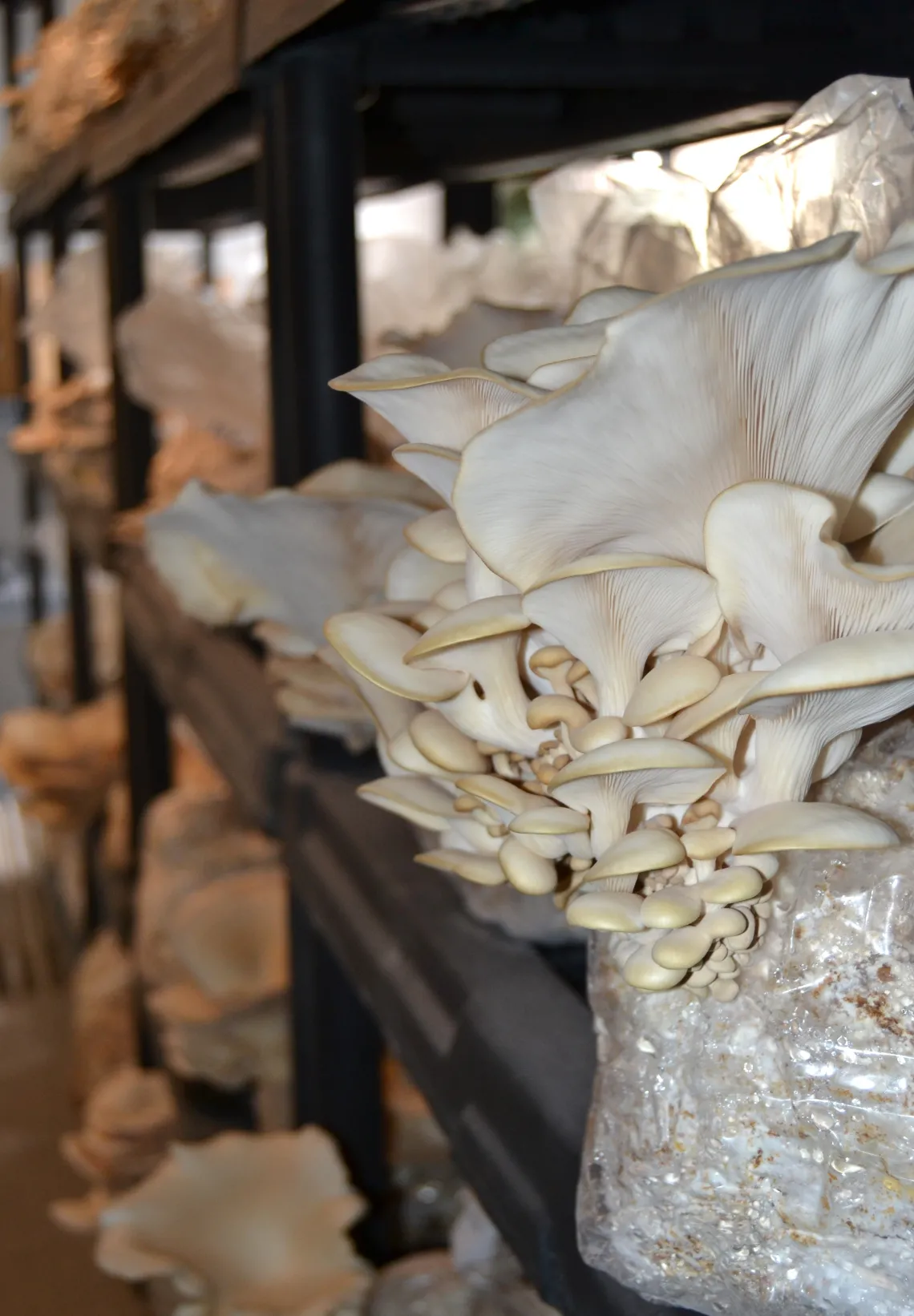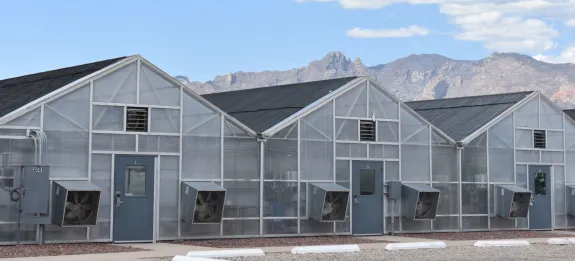
Facilities
Want to schedule a tour? Fill out our tour request form, or call us at (520) 626-9566
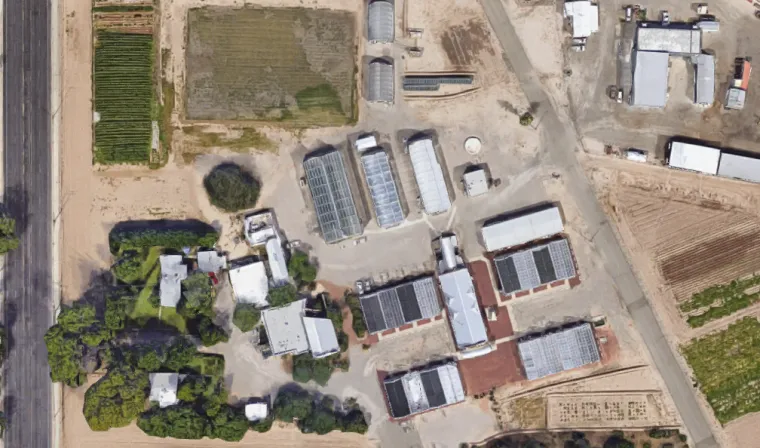
The Controlled Environment Agriculture Center (CEAC) facilities consist of greenhouses, vertical farm, growth chambers, office spaces for faculty, staff and students, laboratory space, state of the art classroom and meeting rooms. The greenhouses are controlled by commercial greenhouse climate control systems. The CEAC facility is part of the UA Campus Agriculture Center and the overall facility is staffed 24/7/365 to monitor facilities and provide operations support.
Get involved! - Opportunities for collaborative research are available, please communicate with us if you are interested in research, product evaluations and educational program opportunities. Learn more by visiting our Industry Partnership page.
Teaching and Education Greenhouse
The Teaching & Education Greenhouse is used for the applied learning components of our Introduction to Hydroponics course and Advanced Hydroponics Course. Our introductory course is available for any student regardless of major, so that any UA student can learn to grow nutritious food or cultivate a passion for CEA. Each year we perform trials and collect data on different seed varieties.
Sawtooth style 5,400 sqft. greenhouse equipped with Ridder environmental control system, with pad and fan-based mechanical cooling, and with natural gas-based unit heater as well as with Ridder fertigation system. Capacity of 800-1200 tomato, cucumber, or pepper plants.
Research and Demo Greenhouses
Two identical curved roofs, each with 2,850 sqft, greenhouses are covered with double layer acrylic on the gable end walls and double layer polyethylene film on the roofs, equipped with Argus Titan environmental control system, with pad and fan-based mechanical cooling, natural gas-based unit heating system. These greenhouses are also equipped with high pressure fogging and natural ventilation systems for research.
In addition, a total of 16, each 1,100 sqft, A-Frame greenhouses are at CEAC Campus, and they are equipped with Wadsworth EnviroStep control systems, with pad and fan-based mechanical cooling, and natural gas-based unit heating system, and these greenhouses are covered with double layer acrylic. These greenhouses are used to perform research projects, display hydroponic systems demonstrations in collaboration with industrial partners, and to conduct intensive workshops for growers looking to boost their hydroponic know-how. Gravel floors with concrete walkways. All research greenhouses are suitable for demonstrating commercial hydroponic crop production.
Mars-Lunar Greenhouse
The Lunar Greenhouse is equipped as a Bioregenerative Life Support System (BLSS) through the design and construction of an innovative hydroponic plant growth chamber. The MLGH prototype consists of four inflatable hydroponic cylindrical units interconnected by a hallway. The prototype represents a full-scale version of the four greenhouses embedded in the proposed inflatable lunar outpost. Each unit exhibits a cylindrical shape of 2.06 m in diameter and 5.5 m in length. The overall canopy horizontal canopy area is 11 m2 in a single module with a total internal volume of 21 m3 in the single unit. Crops are grown in a Cable-Culture system, i.e. a hydroponic crop production system based on the substrate-less Nutrient Film Technique (NFT) that employs growing envelopes suspended via cable from each end of the MLGH unit along the longitudinal section. All the environmental conditions in the chamber is monitored and controlled by a datalogger system.
UAqua Farm
The UAqua Farm is equipped with both coupled and decoupled aquaponics systems to demonstrate engineering and science-based technologies and crop production applications that combine aquaculture with hydroponics. The UAqua Farm greenhouse is also used for the Aquaponics Design and Aquaponics Engineering courses to provide students with hands-on experiences in building and managing aquaponics systems. Additional greenhouses are utilized for designated aquaponics research. The aquaponics greenhouses also serve as educational tools for local schools, and industry professionals alike. Research emphasis included but not limited to aquaponic feed studies, nutrient studies as well as water treatment technologies.
UAg (Vertical) Farm
The vertical farm facility (UAgFarm) has 770 sqft floor space, with two independently climate-controlled rooms, each room with 2 tiers consisting of 3 layers of deep-flow hydroponics beds (each 4ft wide x 8 ft length) with adjustable height between growing bed and lighting. The UAg Vertical Farm utilizes LED lighting with remotely and independently controlled light intensity at each growing shelve. UA-CEAC’s custom designed and built environmental monitoring and control system integrated with graphical user interface enables real-time monitoring of air temperature, relative humidity, CO2, light intensity from aerial environment and pH, electrical conductivity, dissolved oxygen from nutrient solution as well as monitoring of resource use (i.e. energy, water, CO2), while controlling CO2 injections. Air temperature setpoints are maintained by a heat pump system with a dedicated controller. The UAg Vertical Farm facility is used for engineering and science-based research with emphasis on developing and evaluating environmental control, resource savings, integrated systems, lighting studies, optimizing air distribution system designs, and production practices, and to provide experiential educational opportunities for students, and to educate and inform growers and public on indoor growing systems and urban agriculture.
Off-Grid Photovoltaics Integrated Greenhouse Systems
One promising approach to agrivoltaics is the greenhouse system integrated with photovoltaics where part of the incident solar radiation is harvested for generating power to meet some or all the energy demand of the greenhouse system or for sale to the grid. The UA-CEAC’s photovoltaics integrated research programs have focused on evaluating various PV technologies including traditional silicon PVs, luminescent solar concentrator-based PV integrated glass greenhouse covering, and most recently with wavelength selective organic photovoltaics-based greenhouse covering.
University of Arizona Mushroom Lab
Working with the Plant Science Department, CEAC conducts research on optimizing environmental conditions for mushroom growth and improved yields. The focus is on developing systems to economically monitor and control environment to optimize quality and yield as well as enhancing bioefficiency in mushroom production. In collaboration with the Arizona Mushroom Growers Association, we impact the local AZ mushroom industry through educational programs and serve as a distributor for myco-cultivation supplies.


